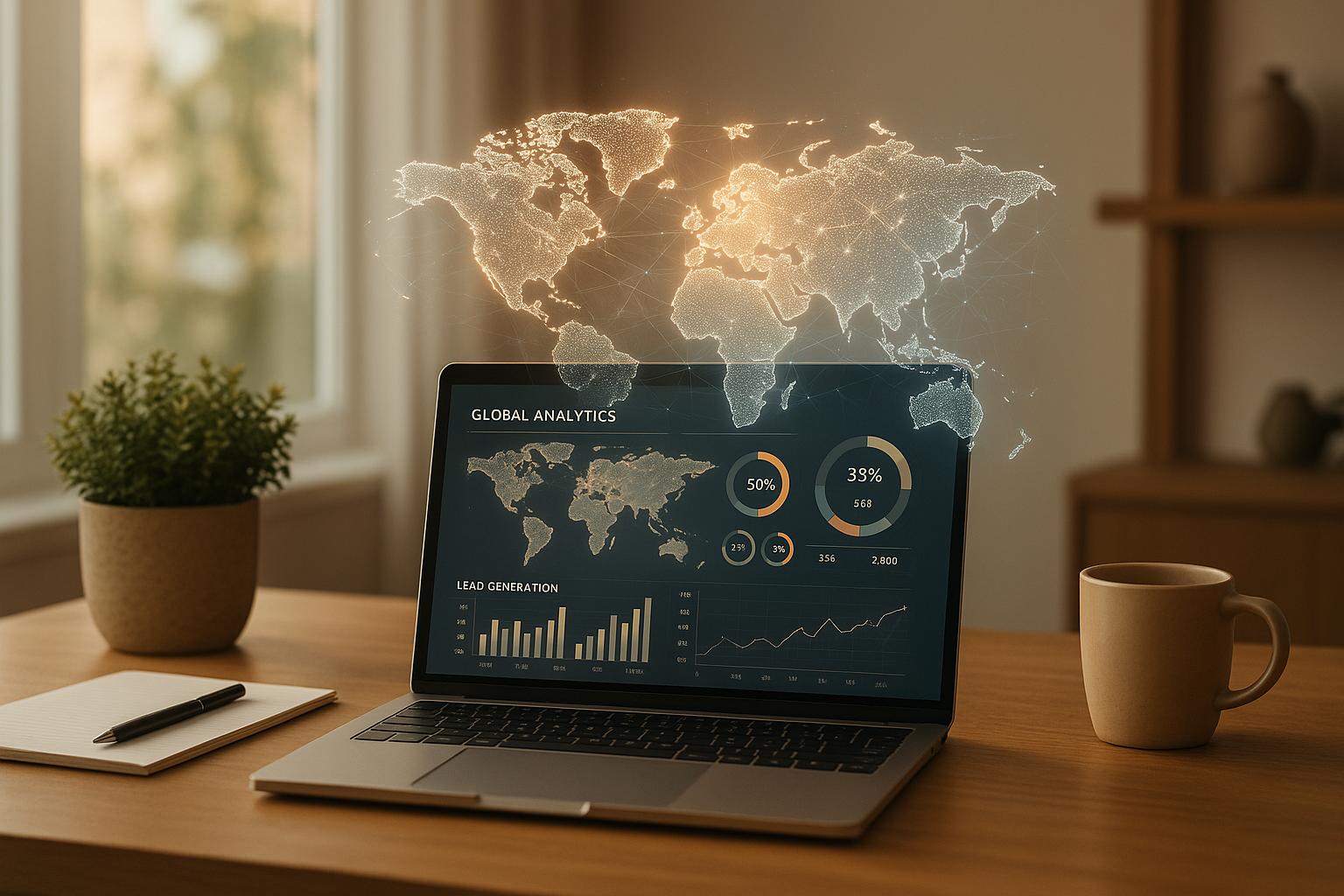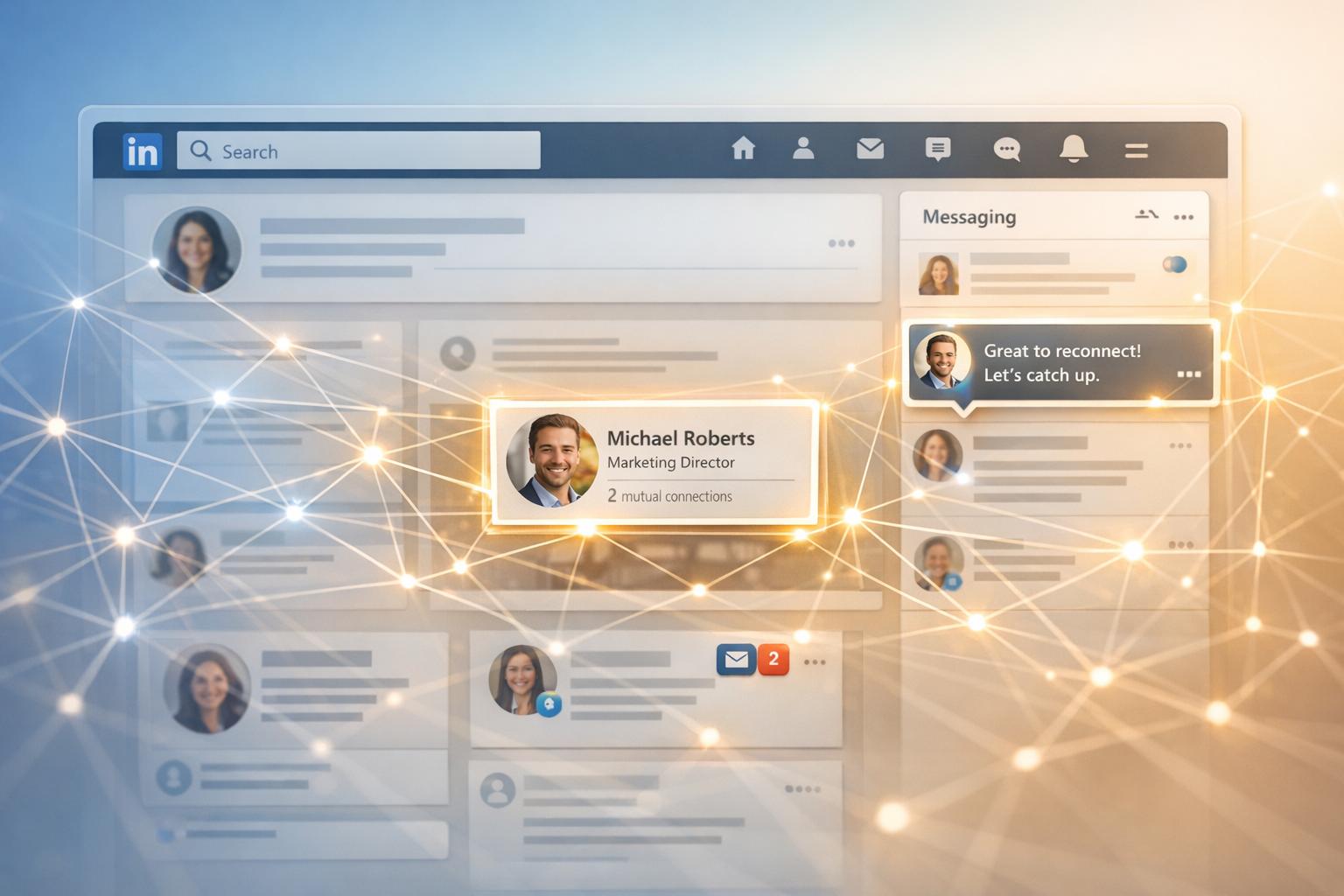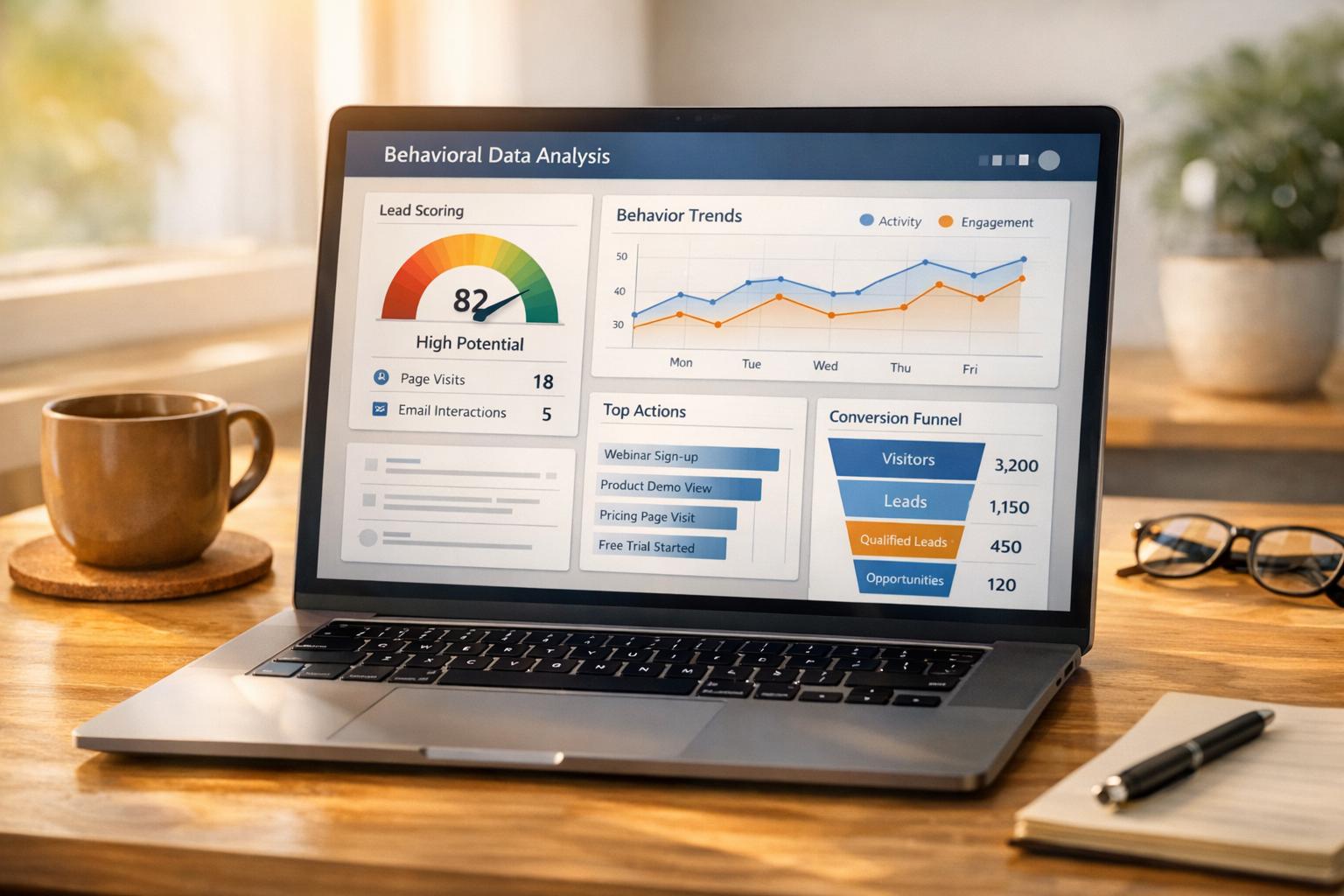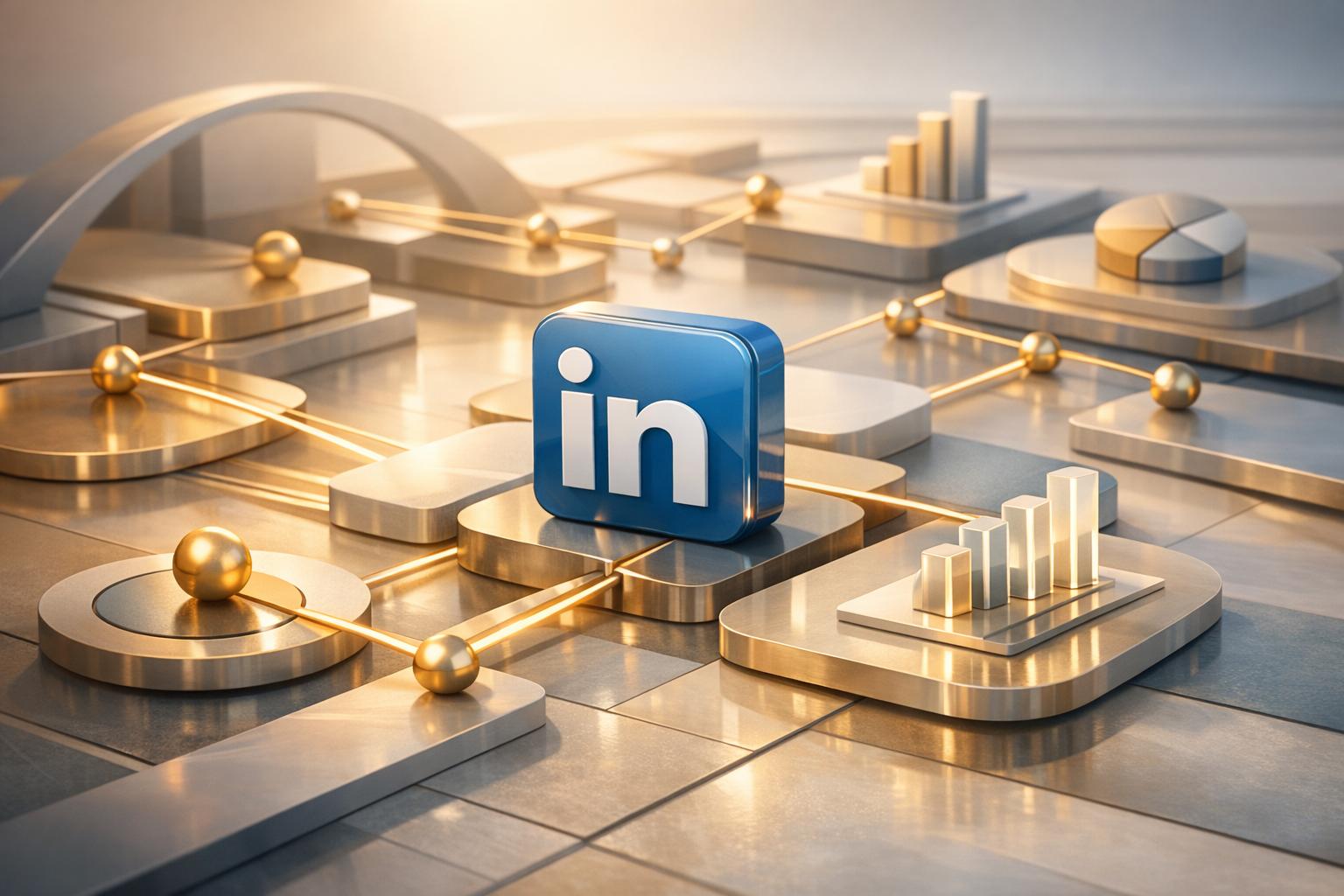
Outsourcing digital lead generation is reshaping B2B sales. Businesses are moving beyond in-house teams to partner with expert providers who combine AI, automation, and data-driven strategies to find and qualify prospects globally. This approach delivers personalized outreach, lower costs, and access to advanced tools without the need to build internal capabilities.
Key Highlights
- What It Is: Outsourcing lead generation involves hiring specialists to handle prospecting, using AI and predictive analytics to target high-value leads.
- Why It Works: Providers offer global time zone coverage, localized expertise, and cost efficiency while maintaining quality.
- Tools & Trends:
- AI for crafting personalized messages and automating follow-ups.
- LinkedIn automation for targeted outreach and engagement tracking.
- Predictive lead scoring to prioritize prospects.
- CRM integration for seamless handoffs between outsourced teams and in-house sales.
- Future Outlook: AI-driven platforms like SalesMind AI are enabling businesses to scale globally while keeping outreach tailored to regional markets.
This model is transforming how companies approach lead generation, helping them expand into new markets efficiently while focusing on building stronger business relationships.
How to choose the right company to outsource lead generation
Core Components of Scalable Lead Gen Services
Successful global lead generation services are built on three key pillars that seamlessly work together to deliver consistent results worldwide. These elements form the foundation of modern outsourcing models, enabling businesses to scale their outreach while maintaining the personalization and quality that B2B buyers expect.
AI-Powered Prospect Engagement
Artificial intelligence has revolutionized how companies engage with prospects, making outreach more efficient while keeping it personal. AI-driven systems analyze data about prospects, their companies, and behavior to craft messages that feel tailored to each recipient.
These systems go beyond simple templates. For example, they can pull insights from a prospect's LinkedIn activity, recent company updates, industry trends, or previous interactions. By factoring in details like job role, company size, recent funding, or tech stack, the AI creates outreach messages that align with the recipient’s specific context.
Follow-up automation plays a crucial role here. AI tracks how prospects interact - whether they open an email, visit a website, or view a profile - and times follow-ups accordingly. This ensures outreach feels timely and relevant, not robotic or pushy.
Even the lead qualification process benefits from AI. Automated tools evaluate responses, score engagement quality, and flag high-potential leads for human follow-up. This division of labor allows sales teams to focus their expertise on the most promising opportunities while AI handles the initial stages of outreach and nurturing.
This AI-driven efficiency sets the stage for more advanced LinkedIn outreach strategies.
LinkedIn Outreach Automation
LinkedIn automation tools streamline the entire outreach process, from identifying prospects to building relationships. These tools are designed to handle repetitive tasks while maintaining a personal touch.
Connection request automation enables teams to send personalized invitations based on precise targeting criteria. Prospects can be filtered by factors like job title, industry, company size, or location. The system then crafts requests that reference shared connections, mutual interests, or relevant business challenges to boost acceptance rates.
Once connected, message sequencing tools take over. These systems can send a series of well-timed, value-focused messages over weeks or months, adapting based on how the prospect engages. This approach ensures consistent communication without overwhelming the recipient.
Profile optimization is another important feature. Teams can maintain polished, professional LinkedIn profiles that establish trust and authority before making contact. This includes refining headlines, summaries, and activity feeds to align with outreach goals.
Automation also includes engagement tracking, which monitors metrics like connection acceptance rates, message responses, and conversions. This data helps teams fine-tune their strategies, improve message templates, and identify what works best for different industries or regions.
By combining these tools with predictive lead scoring, businesses can focus their efforts on the most promising prospects.
Predictive Lead Scoring and CRM Integration
Predictive lead scoring uses machine learning to evaluate prospects based on both explicit data (like company size or industry) and implicit signals (like website activity or content engagement). This helps outsourced teams prioritize high-value opportunities.
These scoring models consider factors such as company growth, hiring trends, technology adoption, and competitive positioning. For instance, they can identify companies that may be entering a buying cycle or expanding their teams - key indicators of potential interest.
Real-time scoring updates, combined with CRM integration, ensure that sales teams have access to complete prospect profiles. This includes engagement history, qualification notes, and insights into what messaging resonated or concerns that arose during earlier interactions.
Activity tracking logs every touchpoint - whether it's a LinkedIn connection, an email, or a phone call - while reporting and analytics provide a clear view of campaign performance. Teams can measure metrics like cost per lead, conversion rates, and time-to-opportunity to refine strategies and demonstrate value to stakeholders.
Together, these three components create a lead generation system that operates efficiently across global markets while adapting to local nuances and expectations.
SalesMind AI: Features for Global Growth

SalesMind AI combines automation with intelligence to help businesses expand their lead generation efforts worldwide. By blending AI-powered outreach with CRM integration, the platform enables companies to manage intricate, multi-regional campaigns while maintaining the personal touch that B2B buyers expect. This seamless integration supports effective LinkedIn outreach and CRM strategies.
LinkedIn Outreach Automation
SalesMind AI simplifies LinkedIn outreach at every step. It automatically creates personalized connection requests using detailed prospect data and adjusts follow-up messages based on how prospects engage.
A centralized dashboard makes managing global campaigns easier, allowing teams to maintain consistent messaging while tailoring content to fit regional norms and business practices. This balance ensures campaigns resonate locally without losing sight of broader objectives.
The platform also uses real-time data to refine outreach efforts. It tracks critical actions like profile views, connection acceptances, and content engagement, helping teams optimize both timing and messaging for maximum impact.
"The AI calls are a game-changer, increasing our conversions dramatically." - Sophie Martin, Sales Director [2]
Advanced Lead Scoring
SalesMind AI takes automation further with its advanced lead scoring system. By leveraging predictive analytics, the platform evaluates both explicit company data and behavioral signals. The scoring algorithm updates dynamically as new data emerges from LinkedIn interactions, website visits, or email activity, ensuring sales teams focus on the most promising leads.
With access to a database of over one billion potential prospects [1], SalesMind AI enhances prospecting by identifying leads that align with specific regional criteria and market dynamics. This intelligent targeting ensures that outreach efforts are both relevant and effective.
The platform’s instant engagement tools can increase conversion rates by up to 8x [2], giving sales teams a significant edge in competitive markets.
CRM Integration and Real-Time Tracking
SalesMind AI integrates seamlessly with major CRM systems, enhancing existing workflows without causing disruptions [2] [3]. This ensures that all prospect interactions, lead scores, and engagement histories are automatically synced with current sales processes, making it easier to scale operations globally.
Real-time analytics provide immediate insights into campaign performance across different regions and market segments. Teams can monitor metrics like connection acceptance rates, response rates, and conversion trends to identify what works best in specific markets.
The platform also includes instant notifications when prospects engage with outreach, allowing sales teams to act on interest as it happens. Its ability to handle up to 1 million calls simultaneously [2] makes it ideal for large-scale operations targeting global audiences.
"We now can scale our call operations while maintaining personalized customer interactions." - John Smith, CMO [2]
sbb-itb-817c6a5
How to Choose and Implement a Global Lead Gen Solution
To successfully expand your lead generation efforts on a global scale, you need a platform that aligns with your business goals and can handle the demands of international operations. Knowing what to prioritize and how to implement these tools effectively can mean the difference between a thriving campaign and an expensive failure.
Key Factors When Choosing Lead Gen Services
When evaluating lead generation platforms, certain features and capabilities should guide your decision:
- Scalability: As your business grows, your platform must handle increasing volumes of outreach without compromising performance. It should support thousands of interactions at once while still delivering personalized communication. Additionally, it should accommodate multiple team members working across various regions.
- Integration Capabilities: A good platform should seamlessly connect with your existing tools, such as your CRM, marketing automation software, and communication systems. Poor integration can lead to fragmented data and inefficiencies.
- Compliance Features: Meeting regulations like GDPR and CAN-SPAM is non-negotiable. Platforms with built-in compliance tools can save you from legal complications down the road.
- Multi-Language and Localization Support: For global campaigns, the ability to handle diverse languages and adapt to different cultural communication styles is essential.
- Analytics and Reporting: In-depth analytics allow you to track performance across regions, industries, and audience segments. Platforms with real-time reporting help you quickly adjust underperforming campaigns.
- Support and Training: Global operations often span multiple time zones, making 24/7 customer support invaluable. Comprehensive training materials ensure all team members use the platform effectively and consistently.
Once you've selected the right platform, the next step is a structured implementation process to maximize its potential.
Best Practices for Implementation
When rolling out a lead generation platform, a step-by-step approach is essential to ensure smooth adoption and minimize errors.
- Start with a Pilot Program: Test the platform in one region before scaling up. This allows you to identify challenges and refine your processes. Document what works and adjust as needed.
- Establish Data Governance Early: Create clear guidelines for collecting, storing, and using prospect data. This includes setting quality standards, managing duplicates, and scheduling regular data cleanups. Poor data management can lead to significant issues as your operations expand.
- Provide Tailored Training: Teams in different regions may have varying levels of technical expertise and sales experience. Develop training materials that address these differences while maintaining consistent usage of the platform. Regular sessions help teams stay updated on new features and best practices.
- Enable Features Gradually: Start with basic functionalities like simple outreach and gradually introduce advanced features, such as lead scoring and complex follow-up sequences. This phased approach prevents teams from feeling overwhelmed and ensures proper testing at each stage.
- Monitor and Maintain Quality Control: Automated outreach can harm your brand if not carefully managed. Set up approval workflows for message templates and conduct regular audits of outgoing communications. Keep an eye on response rates and feedback to catch issues early.
- Test Data Migration: Begin with a small dataset to test the migration process. Export historical data, clean it, and standardize it before importing it into your new platform. This ensures a smooth transition without losing valuable information.
Adjusting for Regional and Market Differences
Once your platform is up and running, adapting your strategy to local markets is critical for success.
- Timing Matters: Schedule messages to align with local business hours in each region. A one-size-fits-all approach rarely works when dealing with different time zones.
- Tailor Communication Styles: Messaging that resonates in one region may not work in another. For example, a direct approach might be effective in the U.S. but could come across as too aggressive in parts of Europe. Research local norms and adjust accordingly.
- Use Local Currency and Measurements: When discussing pricing or metrics, use the formats and symbols familiar to your audience. For instance, U.S. audiences expect dollar signs and decimal points, while other regions may use commas or different symbols.
- Account for Legal Requirements: Regulations like GDPR in Europe or CAN-SPAM in the U.S. vary, so your campaigns must comply with local laws. Automating compliance for each region is a smart move.
- Understand Industry Preferences: Technology use, preferred communication channels, and decision-making processes can differ by region. Research these factors to ensure your campaigns align with local expectations.
- Respect Local Holidays and Calendars: Avoid sending outreach during national holidays or vacation periods. Many platforms allow you to set blackout dates for specific regions, ensuring your campaigns land at the right time.
The Future of Digital Lead Gen Outsourcing
B2B lead generation is undergoing a major transformation, driven by AI-powered automation and scalable outsourcing solutions that adapt on the fly. As businesses face mounting pressure to expand globally while keeping costs in check, traditional lead generation methods are falling short in today’s fast-paced, interconnected world. This shift is paving the way for strategies that reshape how companies approach global outreach.
AI isn’t just advancing technology - it’s changing the game for how businesses find, engage, and convert prospects on a global scale. Companies adopting these tools now are setting themselves up to seize opportunities that manual processes simply can’t handle at scale.
Key Takeaways for B2B Professionals
Looking ahead, there are a few critical trends shaping the future of B2B lead generation. Successful organizations are turning automation into a strategic edge. For example, tools like SalesMind AI are revolutionizing LinkedIn outreach by combining scalable, personalized messaging with a human touch.
Predictive lead scoring is another game-changer. It helps teams identify high-value prospects early, allowing them to focus their efforts on leads with the greatest potential to convert. Additionally, the rise of unified inbox solutions is simplifying how teams manage multiple LinkedIn accounts across regions. Instead of juggling different platforms and losing track of conversations, sales professionals can now streamline outreach efforts from one centralized interface - all while staying compliant with local regulations.
Real-time lead tracking is also becoming essential. By offering instant insights into how prospects are engaging across various touchpoints, these tools enable sales teams to react quickly to buying signals and tailor their approach based on actual behavior, not guesswork.
Building for Scalable Growth
To thrive in this evolving landscape, businesses are blending advanced technology with smart strategies. Platforms capable of handling thousands of interactions while still delivering personalized experiences are setting the standard for scalable growth. These tools build on the AI and automation strategies already reshaping the industry, ensuring a smooth transition to more advanced methods.
Adapting messaging for different markets without losing efficiency is another priority. This involves using platforms that support multiple languages, respect local communication norms, and automatically adjust for regional business practices and regulations.
Data-driven decision-making is quickly becoming the norm for effective lead generation. Companies that can analyze performance across various regions, industries, and audience segments will have a clear edge over those relying on instinct or outdated manual processes.
The ability to test, learn, and refine campaigns is now a competitive advantage. Advanced lead generation platforms allow businesses to pinpoint what works in specific markets, scale successful strategies, and move on from ineffective ones without wasting time or resources.
As global business becomes increasingly complex, the companies that excel will be those that combine the power of AI automation with human insights. The goal isn’t to replace sales professionals but to equip them with tools that enhance their abilities and expand their reach in global markets. The future of digital lead generation outsourcing lies in empowering teams to build deeper, more meaningful business relationships while scaling their efforts like never before.
FAQs
How does AI make digital lead generation more efficient and personalized?
AI is reshaping digital lead generation by making the process quicker, more intelligent, and better aligned with customer needs. By analyzing massive datasets, it pinpoints high-quality leads, forecasts conversion probabilities, and automates tasks like audience segmentation and lead scoring. This not only simplifies workflows but also minimizes wasted effort.
Another game-changer is hyper-personalization. AI dives deep into customer behavior and preferences, enabling businesses to craft campaigns that feel uniquely tailored. Whether it’s personalized product suggestions or highly targeted ads, every interaction becomes more relevant and engaging. With these tools, companies can expand their reach without losing that personal touch.
How does integrating predictive lead scoring with CRM systems benefit global lead generation?
Integrating predictive lead scoring with CRM systems makes global lead generation more efficient by helping businesses focus on prospects with the highest potential. By analyzing historical data and customer behavior, this method guides sales teams to channel their energy where it matters most.
It also simplifies the lead qualification process through automation, saving time and enabling businesses to handle larger lead volumes and intricate sales cycles. With accurate, actionable insights, sales and marketing teams can work in sync, driving improved conversion rates and supporting consistent growth on a global scale.
How can businesses stay compliant with local laws when using global lead generation strategies?
To navigate local laws while executing global lead generation strategies, businesses must focus on data privacy, consent, and compliance with regulations like the Telephone Consumer Protection Act (TCPA) in the U.S. and the General Data Protection Regulation (GDPR) in Europe.
Here’s how businesses can align their practices:
- Secure explicit consent: Always ensure leads give clear permission before reaching out, particularly when using automated calls or text systems.
- Adhere to data protection standards: Be transparent about how personal data is collected and used, supported by clear privacy policies and consent forms.
- Respect individual rights: Comply with requests to revoke consent or delete personal information promptly.
- Monitor regulatory changes: Stay informed about updates to laws, such as those from the FCC or other regulatory bodies, and adjust practices accordingly.
By staying vigilant and proactive, businesses can expand their lead generation initiatives while maintaining compliance across different regions.


.avif)


